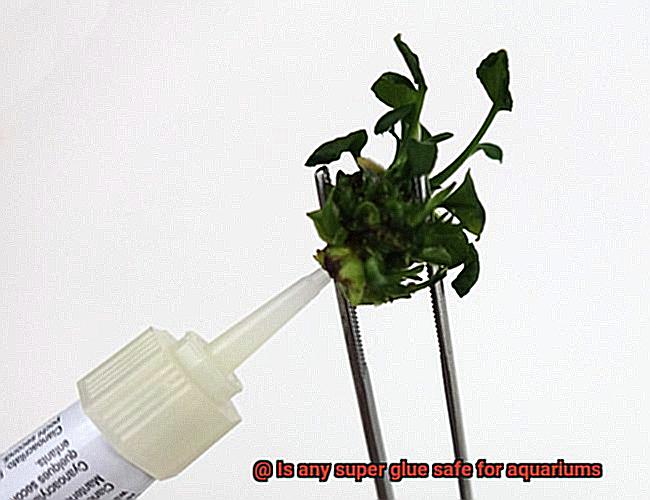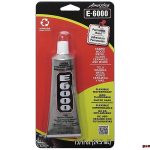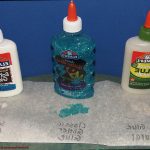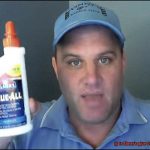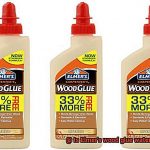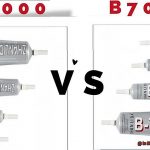Do you take pride in your aquarium and want to ensure its longevity? As an aquarium owner, you know that maintaining a beautiful aquatic environment requires patience and effort. But what happens when something breaks or needs fixing? Finding the right adhesive can be tricky, especially when it comes to ensuring the safety of your fish. This is where the debate over whether any super glue is safe for aquariums comes into play.
As an aquarium enthusiast, you want to keep your aquatic environment intact while also accomplishing your DIY projects successfully. However, using the wrong adhesive can lead to toxic fumes or chemical reactions that could dissolve the sealant, exposing your fish to harmful elements.
That’s why we’re here to help. In this blog post, we’ll delve deeper into the subject of super glue and its suitability for use in aquariums. We’ll explore safety concerns and highlight the advantages of using certain types of super glue in an aquatic environment. Our goal is to provide you with a comprehensive guide on this topic so that you can make informed decisions when selecting adhesives for your aquarium. So get ready to dive into the world of aquatic adhesives.
What is Super Glue?
Contents
- 1 What is Super Glue?
- 2 Is All Super Glue Safe for Aquariums?
- 3 Different Types of Super Glue that are Safe for Aquariums
- 4 How to Use Super Glue in an Aquarium
- 5 Safety Precautions when Using Super Glue in an Aquarium
- 6 Benefits of Using Super Glue in an Aquarium
- 7 Problems with Using Super Glue in an Aquarium
- 8 Alternatives to Using Super Glue in an Aquarium
- 9 Conclusion
Look no further than Super glue, also known as cyanoacrylate adhesive. This incredible bonding agent was first discovered in 1942 by Dr. Harry Coover Jr., but it wasn’t until the 1950s that it became commercially available.
Super glue works by reacting with moisture in the air or on the surfaces being bonded, creating a strong and durable bond. Its versatility makes it perfect for use on a wide range of materials, including plastics, metals, wood, ceramics, and rubber. With different forms of super glue available, including liquid, gel, and spray, there’s a variant for every project.
The liquid form is perfect for small repairs or projects, while the thicker gel form is better suited for vertical surfaces or fill-in gaps. Spray super glue is ideal for large areas or hard-to-reach spaces. These variations make using Super glue easy and customizable to any project.
Although Super glue is known for its strong bonding capabilities, it should be used carefully and following the instructions on the packaging. It can be harmful if ingested or comes into contact with skin or eyes. Proper storage is also important; keep it in a cool, dry place away from children and pets.
When using Super glue in aquariums, there are a few things to consider. Not all super glues are safe for use in aquariums because some contain chemicals that can be harmful to aquatic life. However, certain brands like Seachem Reef Glue and Two Little Fishies Aquastik are specifically formulated for use in aquariums and are deemed safe for aquatic life.
It’s essential to follow the manufacturer’s instructions carefully when using any type of glue in an aquarium. Allow the glue to fully cure before introducing any fish or other aquatic life into the tank. Additionally, it’s always a good idea to test the glue on a small area before using it on a larger scale.
Is All Super Glue Safe for Aquariums?
Super glue can be a useful adhesive to keep everything in place, but not all super glues are safe for aquarium use. It’s crucial to select the right type of glue to avoid endangering aquatic life.
Some super glues contain harmful chemicals like cyanoacrylate that can be toxic to fish and other aquatic organisms. These chemicals can cause health issues or even death in extreme cases. However, there are specific types of super glue designed for underwater use that are non-toxic to aquatic life.
One example of an aquarium-safe super glue is the Aquarium Safe Super Glue by Bob Smith Industries. This glue is made explicitly for aquariums and is safe for use in aquatic environments.
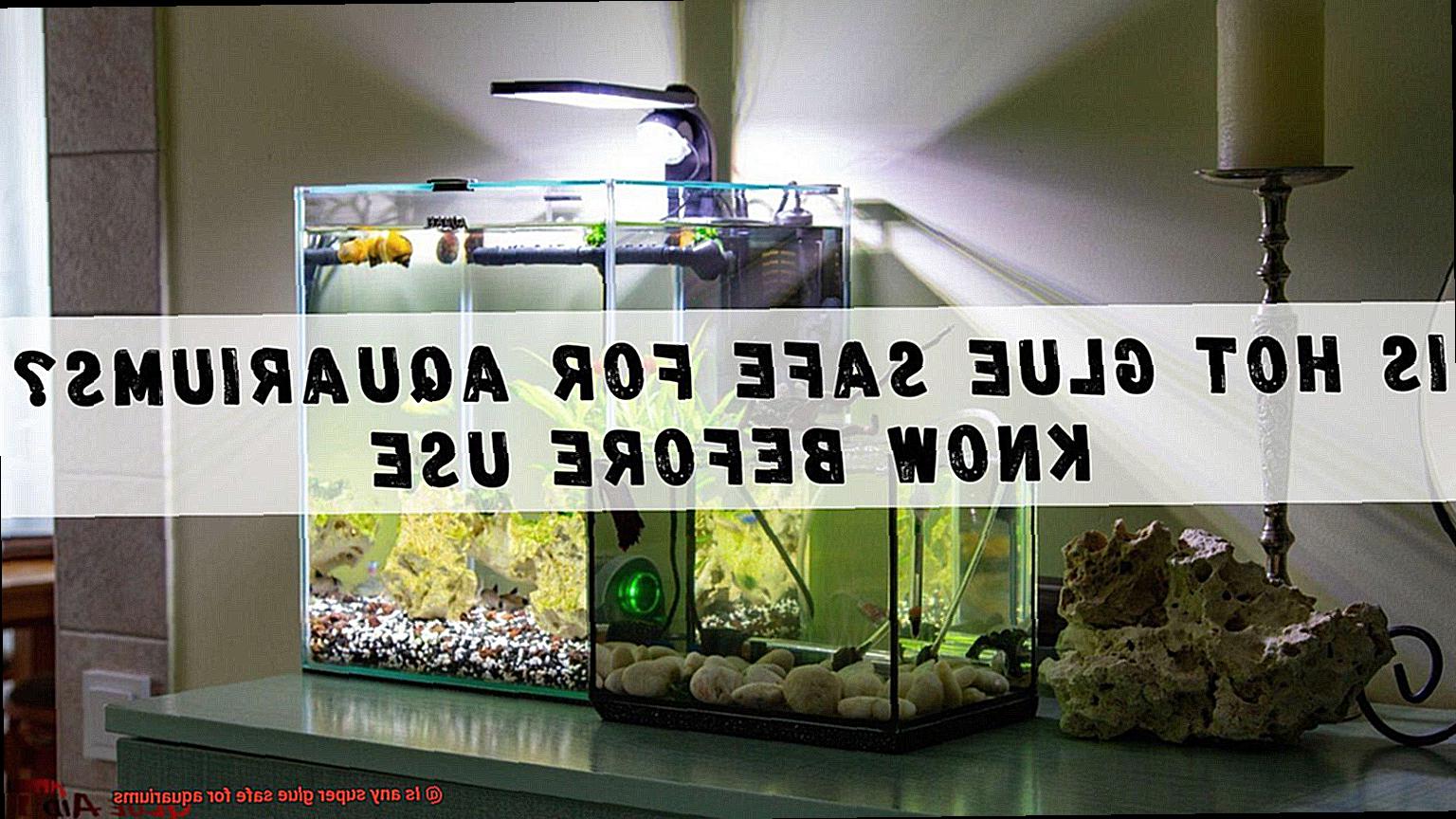
It’s important to note that even with aquarium-safe super glue, proper application techniques must be followed. Apply the glue outside the water and remove any excess before placing the decoration or accessory back into the tank. This will prevent any residual glue from leaching into the water and potentially harming your aquatic pets.
Different Types of Super Glue that are Safe for Aquariums
Decorating an aquarium can be a fun and creative way to add personality to your underwater world. However, it’s important to choose the right type of super glue to ensure the safety of your aquatic friends. There are different types of super glue that are safe for use in aquariums, each with its unique features. Here are five sub-sections that delve into the details of these safe super glues:
Cyanoacrylate glue
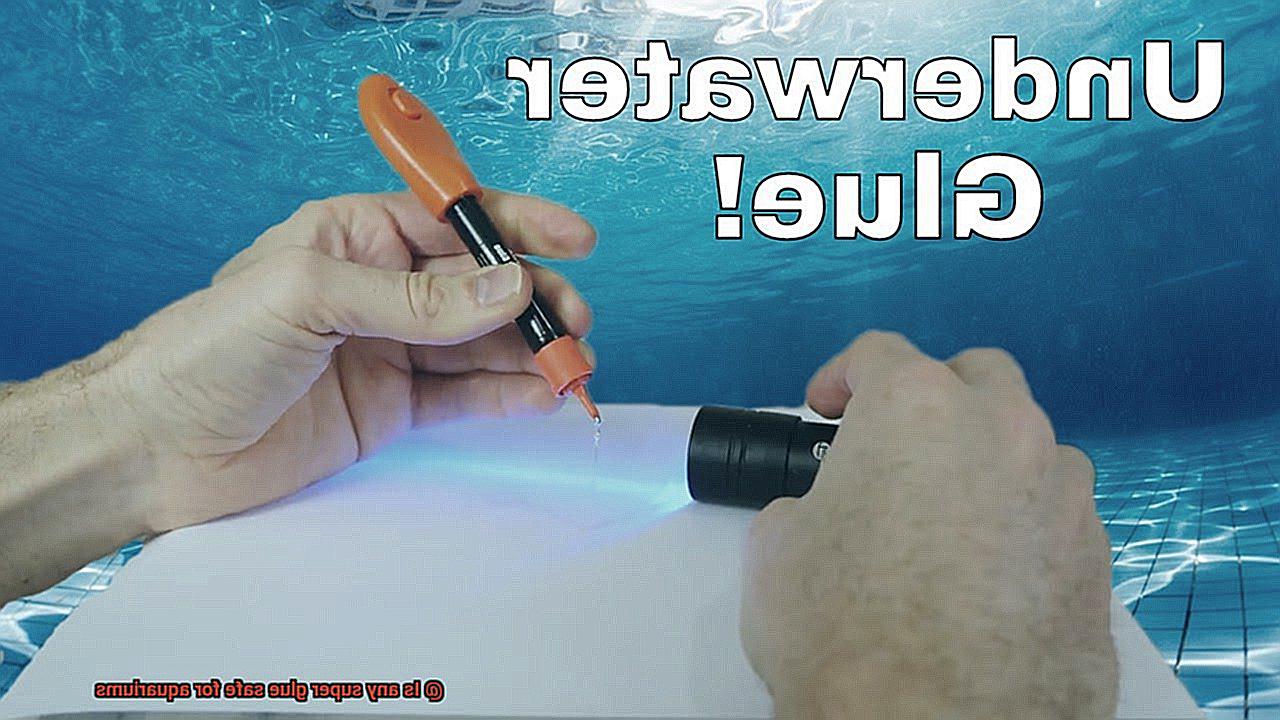
This type of glue is commonly known as “superglue.” It is a fast-drying adhesive that forms a strong bond and is safe for use in aquariums. Cyanoacrylate glue is also waterproof, making it ideal for use in wet conditions. It’s crucial to ensure that the glue is fully cured before adding any aquatic life to the aquarium.
Epoxy glue
Epoxy glue consists of two parts that must be mixed before use. It’s known for its exceptional bonding strength and can be used to repair glass, ceramics, and other materials in an aquarium. This glue takes longer to dry than cyanoacrylate glue but offers a more permanent solution. It’s important to note that some epoxy-based glues can release harmful chemicals into the water, so it’s essential to choose an epoxy glue that is specifically labeled as safe for aquarium use.
Silicone adhesive
Silicone adhesive is ideal for sealing joints and gaps in an aquarium as they are flexible and waterproof. This type of glue creates a waterproof seal that will not break down over time, making it perfect for use in aquariums. Silicone adhesives are also non-toxic and will not harm aquatic life.
Polyurethane adhesive
Polyurethane adhesive is ideal for attaching decorations or rocks to the aquarium floor or walls. It’s essential to follow the manufacturer’s instructions carefully when using polyurethane adhesive. This type of adhesive should only be used in well-ventilated areas as it can release fumes that are harmful to aquatic life.
Aquarium-specific glues
There are types of super glue that are specifically designed for use in aquariums. These glues are non-toxic, waterproof, and safe for use with aquatic life. They are an excellent option for those who want to ensure the safety of their aquarium’s inhabitants.
How to Use Super Glue in an Aquarium
Aquarium hobbyists often need to fix or attach objects in their tanks, and super glue can be a useful tool for this purpose. However, using super glue in an aquarium requires caution and proper preparation to avoid harming aquatic life. Here are five sub-sections outlining how to safely use super glue in an aquarium:
Choose the Right Type of Glue
When using super glue in an aquarium, it’s crucial to choose a cyanoacrylate-based glue that is safe for aquatic use. These glues are non-toxic and do not release harmful chemicals into the water. Brands like Seachem Reef Glue and Two Little Fishies Aquastik are specifically formulated for use in aquariums. Always read the label to ensure that the glue does not contain any additives or fillers that could be harmful to aquatic life.
Prepare the Surface
Proper surface preparation is essential when using super glue in an aquarium. Before applying the glue, clean and dry the surface thoroughly to ensure that it adheres properly and does not dissolve or loosen over time. Use a damp cloth or paper towel to remove any dirt or debris, then dry the surface with a clean towel or cloth.
Apply Carefully
When applying super glue in an aquarium, use it sparingly and with care to avoid any contact with living organisms such as fish, plants, or corals. Apply a small amount of glue to one of the surfaces you wish to bond together, then press the surfaces together firmly for 10-15 seconds to allow the glue to set. Avoid using super glue on any surfaces that may come into contact with food or water, such as plants or decorations.
Let It Cure Completely
After applying super glue, let it cure completely before placing the object in the water. This can take anywhere from a few minutes to a few hours, depending on the brand and type of glue. It’s important to let the glue cure completely to ensure that it does not release any harmful chemicals into the water.
Test Before Using
Before using any new product in your aquarium, test it on a small, inconspicuous area first to make sure it doesn’t harm your fish or plants. Apply a small amount of glue to an area that is not visible, then observe the area over the next few days to ensure that there are no adverse effects.
Safety Precautions when Using Super Glue in an Aquarium
While super glue can be a useful tool, it can also pose a risk to aquatic life if not used safely. To protect your aquatic pets and ensure their well-being, you need to follow a few safety precautions when using super glue in an aquarium.
Firstly, only use aquarium-safe super glue. Not all types of super glue are suitable for use in aquatic environments. Some contain harmful chemicals that can leach into the water and harm fish and other aquatic creatures. It’s crucial to look for super glue that is labeled as safe for aquarium use and to avoid using any other type of adhesive.
Secondly, use the glue sparingly. Only small amounts of super glue should be used at a time. Larger amounts can create toxic fumes that can harm fish and other aquatic creatures. Additionally, ensure that the glue is completely dry before introducing any aquatic life into the tank.
Thirdly, wear protective gear when handling super glue in an aquarium. Gloves should be worn to protect your hands from contact with the glue, and a mask should be worn to prevent inhalation of fumes. If you accidentally get super glue on your skin or in your eyes, seek medical attention immediately.
Lastly, dispose of any unused glue properly. Super glue should never be poured down the drain or thrown in the trash as it can harm the environment. Instead, it should be disposed of according to local regulations or taken to a hazardous waste facility for proper disposal.
Benefits of Using Super Glue in an Aquarium
Consider super glue, also known as cyanoacrylate adhesive. As an expert in this field, I can attest to the numerous benefits of using super glue in an aquatic environment.
First and foremost, super glue is completely non-toxic. It won’t harm your fish or other aquatic creatures once it’s fully cured. This makes it an excellent option for securely attaching plants and decorations to your tank without posing any danger to your pets.
Furthermore, super glue is quick-drying and easy to use. Unlike traditional aquarium sealants that take up to 24 hours to cure, super glue dries in seconds and can hold items securely in place. This is a great convenience for aquarists who want to make changes to their tank setup quickly and without any hassle.
In addition, super glue can be used as a temporary fix for minor cracks or leaks in your aquarium. However, it’s crucial to use the right type of super glue and seek out a permanent solution as soon as possible to avoid any potential harm to your aquatic life.
To summarize, the benefits of using super glue in an aquarium are numerous. It’s a safe, effective, and convenient way to attach decorations and plants to your tank. Just remember to follow proper precautions when using it in an aquatic environment and use it sparingly.
Problems with Using Super Glue in an Aquarium
There are a few potential risks and problems associated with using this adhesive in an aquatic environment that should be considered.
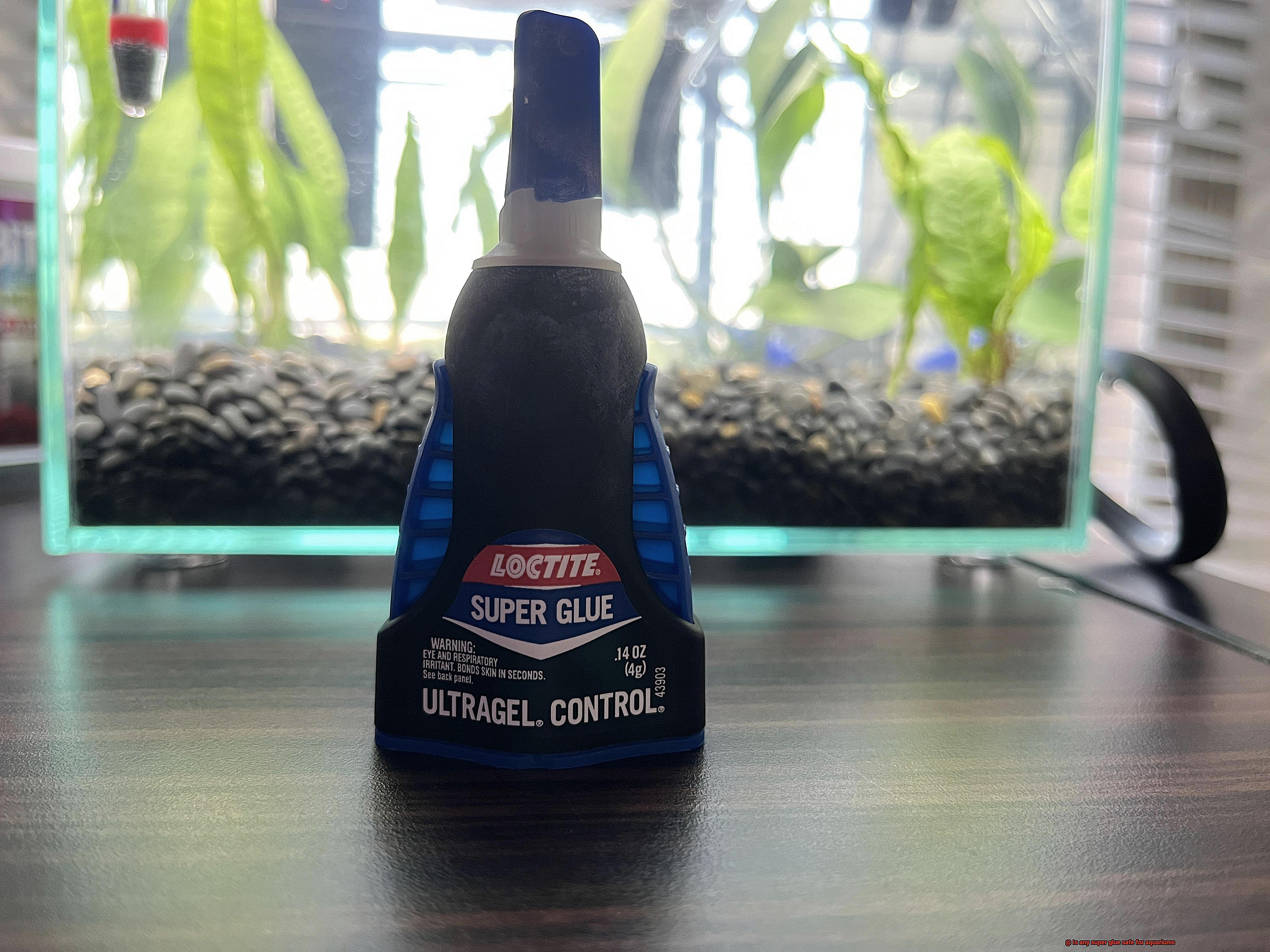
Firstly, not all types of super glue are safe for use in aquariums. Many contain harmful chemicals that can be detrimental to the health of fish and other aquatic life. Therefore, it’s crucial to carefully read the label and ensure that any product you use is safe for aquatic use.
The second issue with using super glue in an aquarium is controlling where the glue goes. If it accidentally gets applied to a living organism or plant, it can cause serious harm or even death. Furthermore, if the glue isn’t completely dry before being introduced into the aquarium, it can release toxins into the water, posing a threat to the inhabitants.
Even if you’re using a super glue that’s labeled as “aquarium-safe,” it’s important to remember that no glue is entirely foolproof. Even the best quality glues can break down over time and release harmful chemicals into the water, potentially putting your aquarium’s inhabitants at risk.
Alternatives to Using Super Glue in an Aquarium
Although it may seem like a quick solution, it can pose a risk to your aquatic pets and the overall health of your tank. Fortunately, there are numerous alternatives to using super glue that are just as effective and much safer for your fish and other aquatic animals.
One alternative worth considering is aquarium silicone sealant. This specific type of adhesive is formulated for use in aquariums and is entirely safe for fish and other aquatic animals. It is also waterproof and can be used to seal leaks or attach objects to the sides of the aquarium. This is an excellent choice if you require a robust adhesive that won’t harm your pets.
Another option is to use zip ties or cable ties. These plastic ties can be effortlessly secured to objects and then attached to the side of the aquarium. They are also reusable and can be quickly removed if needed. This option is ideal if you need a temporary solution or want something that can be easily adjusted.
For those seeking a more natural alternative, moss or algae can be used to attach objects in the aquarium. Simply tie the object to a piece of moss or algae and place it in the tank. Over time, the moss or algae will grow around the object, securing it in place. This approach is perfect if you want a natural appearance in your tank or want to encourage natural growth in your aquarium.
Lastly, suction cups can be an excellent substitute for adhesive. They can be used to attach objects to the sides of the aquarium without any risk of harming your aquatic pets. Suction cups are also easy to remove and reusable, making them ideal for those who enjoy rearranging their tank often.
CKAC5L8G4oI” >
Conclusion
As an aquarium enthusiast, ensuring the safety of your aquatic environment is top priority when undertaking DIY projects. The wrong adhesive can lead to toxic fumes or chemical reactions that could harm your fish. Therefore, choosing the right type of glue is crucial for a successful project without endangering aquatic life.
Super glue may seem like a go-to option due to its strong bonding capabilities and versatility. However, not all super glues are safe for use in aquariums as some contain chemicals that can be harmful to aquatic life. It’s essential to follow the manufacturer’s instructions carefully and allow the glue to fully cure before introducing any fish or other aquatic life into the tank.
There are different types of super glue that are safe for use in aquariums, including cyanoacrylate glue, epoxy glue, silicone adhesive, polyurethane adhesive, and aquarium-specific glues. Each has unique features and benefits.
But even with aquarium-safe super glue, proper application techniques must be followed. Apply the glue outside the water and remove any excess before placing the decoration or accessory back into the tank.
Fortunately, there are alternatives to using super glue in an aquarium that are just as effective and much safer for your fish and other aquatic animals. These include aquarium silicone sealant, zip ties or cable ties, moss or algae, and suction cups.
By following these guidelines and choosing suitable adhesives for your project needs, you can maintain a beautiful aquatic environment while ensuring the safety of your fish.

